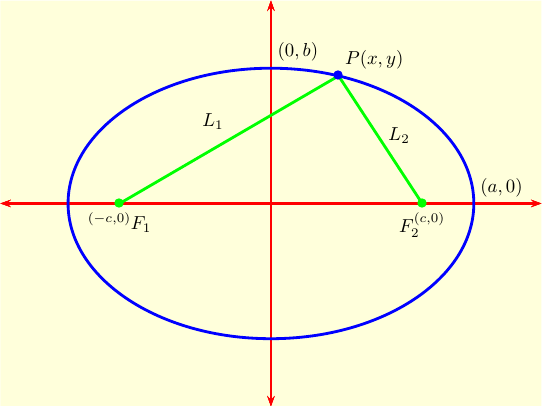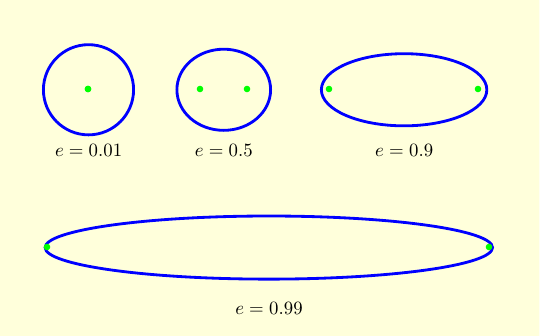
Home
Integration by Parts
Integration by PartsExamples
Integration by Parts with a definite integral
Going in Circles
Tricks of the Trade
Integrals of Trig Functions
Antiderivatives of Basic Trigonometric FunctionsProduct of Sines and Cosines (mixed even and odd powers or only odd powers)
Product of Sines and Cosines (only even powers)
Product of Secants and Tangents
Other Cases
Trig Substitutions
How Trig Substitution WorksSummary of trig substitution options
Examples
Completing the Square
Partial Fractions
Introduction to Partial FractionsLinear Factors
Irreducible Quadratic Factors
Improper Rational Functions and Long Division
Summary
Strategies of Integration
SubstitutionIntegration by Parts
Trig Integrals
Trig Substitutions
Partial Fractions
Improper Integrals
Type 1 - Improper Integrals with Infinite Intervals of IntegrationType 2 - Improper Integrals with Discontinuous Integrands
Comparison Tests for Convergence
Modeling with Differential Equations
IntroductionSeparable Equations
A Second Order Problem
Euler's Method and Direction Fields
Euler's Method (follow your nose)Direction Fields
Euler's method revisited
Separable Equations
The Simplest Differential EquationsSeparable differential equations
Mixing and Dilution
Models of Growth
Exponential Growth and DecayThe Zombie Apocalypse (Logistic Growth)
Linear Equations
Linear ODEs: Working an ExampleThe Solution in General
Saving for Retirement
Parametrized Curves
Three kinds of functions, three kinds of curvesThe Cycloid
Visualizing Parametrized Curves
Tracing Circles and Ellipses
Lissajous Figures
Calculus with Parametrized Curves
Video: Slope and AreaVideo: Arclength and Surface Area
Summary and Simplifications
Higher Derivatives
Polar Coordinates
Definitions of Polar CoordinatesGraphing polar functions
Video: Computing Slopes of Tangent Lines
Areas and Lengths of Polar Curves
Area Inside a Polar CurveArea Between Polar Curves
Arc Length of Polar Curves
Conic sections
Slicing a ConeEllipses
Hyperbolas
Parabolas and Directrices
Shifting the Center by Completing the Square
Conic Sections in Polar Coordinates
Foci and DirectricesVisualizing Eccentricity
Astronomy and Equations in Polar Coordinates
Infinite Sequences
Approximate Versus Exact AnswersExamples of Infinite Sequences
Limit Laws for Sequences
Theorems for and Examples of Computing Limits of Sequences
Monotonic Covergence
Infinite Series
IntroductionGeometric Series
Limit Laws for Series
Test for Divergence and Other Theorems
Telescoping Sums
Integral Test
Preview of Coming AttractionsThe Integral Test
Estimates for the Value of the Series
Comparison Tests
The Basic Comparison TestThe Limit Comparison Test
Convergence of Series with Negative Terms
Introduction, Alternating Series,and the AS TestAbsolute Convergence
Rearrangements
The Ratio and Root Tests
The Ratio TestThe Root Test
Examples
Strategies for testing Series
Strategy to Test Series and a Review of TestsExamples, Part 1
Examples, Part 2
Power Series
Radius and Interval of ConvergenceFinding the Interval of Convergence
Power Series Centered at $x=a$
Representing Functions as Power Series
Functions as Power SeriesDerivatives and Integrals of Power Series
Applications and Examples
Taylor and Maclaurin Series
The Formula for Taylor SeriesTaylor Series for Common Functions
Adding, Multiplying, and Dividing Power Series
Miscellaneous Useful Facts
Applications of Taylor Polynomials
Taylor PolynomialsWhen Functions Are Equal to Their Taylor Series
When a Function Does Not Equal Its Taylor Series
Other Uses of Taylor Polynomials
Functions of 2 and 3 variables
Functions of several variablesLimits and continuity
Partial Derivatives
One variable at a time (yet again)Definitions and Examples
An Example from DNA
Geometry of partial derivatives
Higher Derivatives
Differentials and Taylor Expansions
Differentiability and the Chain Rule
DifferentiabilityThe First Case of the Chain Rule
Chain Rule, General Case
Video: Worked problems
Multiple Integrals
General Setup and Review of 1D IntegralsWhat is a Double Integral?
Volumes as Double Integrals
Iterated Integrals over Rectangles
How To Compute Iterated IntegralsExamples of Iterated Integrals
Fubini's Theorem
Summary and an Important Example
Double Integrals over General Regions
Type I and Type II regionsExamples 1-4
Examples 5-7
Swapping the Order of Integration
Area and Volume Revisited
Double integrals in polar coordinates
dA = r dr (d theta)Examples
Multiple integrals in physics
Double integrals in physicsTriple integrals in physics
Integrals in Probability and Statistics
Single integrals in probabilityDouble integrals in probability
Change of Variables
Review: Change of variables in 1 dimensionMappings in 2 dimensions
Jacobians
Examples
Bonus: Cylindrical and spherical coordinates
Ellipses can be elegantly described in four ways.
|
The simplest description of an ellipse is as a squashed or stretched circle. Start with the unit circle $x^2 + y^2 =1$, and stretch it by a factor of $a$ in the $x$ direction and $b$ in the $y$ direction to get:
| The standard formula for an ellipse in rectangular coordinates is $$\frac{x^2}{a^2} + \frac{y^2}{b^2} = 1.$$ |
|
Now let $c = \sqrt{a^2-b^2}$. The points $(\pm c, 0)$ are called foci. These points are extremely important in astronomy, since planets follow elliptical orbits with the sun at a focus, not with the sun at the center. Let $F_1(-c,0)$ and $F_2(c,0)$ be the two foci, let $P(x,y)$ be an arbitrary point on the ellipse. Let $L_1$ be the distance from $F_1$ to $P$, and let $L_2$ be the distance from $F_2$ to $P$, as in the figure on the right. |
|
| Amazing fact: The ellipse is the set of all points where $L_1 + L_2 = 2a$. |
This fact gives elliptical rooms amazing acoustic properties. If you whisper at one focus of such a room, the sound waves from your voice will bounce off the walls and converge at the other focus -- that's why it is called a focus. The same goes for light reflecting off elliptical mirrors.
To understand the amazing fact, let's convert the equation $L_1 + L_2 = 2a$ to rectangular coordinates: \begin{eqnarray*} L_1 + L_2 & = & 2a \cr\cr L_1 & = & 2a-L_2 \cr \cr \sqrt{(x+c)^2+y^2} & = & 2a -\sqrt{(x-c)^2 + y^2} \cr\cr (x+c)^2 + y^2 & = & 4a^2 + (x-c)^2 + y^2 - 4a \sqrt{(x-c)^2 + y^2}\cr\cr 4a\sqrt{(x-c)^2 + y^2}&=& 4a^2-4cx \cr \cr a \sqrt{(x-c)^2 + y^2} &=& a^2-cx \cr \cr a^2(x-c)^2+ a^2 y^2 &=& a^4+c^2x^2 -2a^2cx \cr \cr a^2x^2 + a^2c^2 -2a^2cx + y^2 &=& a^4 + c^2x^2 -2a^2cx \cr \cr (a^2-c^2)x^2 + a^2 y^2 &=& a^2(a^2-c^2) \cr \cr b^2 x^2 + a^2 y^2 &=& a^2b^2 \cr \cr \frac{x^2}{a^2} + \frac{y^2}{b^2} &=& 1,\end{eqnarray*} where we have used the fact that $b^2=a^2-c^2$. That's a long and messy calculation for a simple and elegant result. You should be able to construct the equation of an ellipse given any two of $a$, $b$ and $c$, since you can get the third from $c^2=a^2-b^2.$
|
Example 1: Find the location of the foci of the ellipse
$\displaystyle{\frac{x^2}{25} + \frac{y^2}{9}=1}$.
|
Solution: We have $a=5$ and $b=3$, so $c = \sqrt{a^2-b^2} = 4$. The foci are at $(\pm 4,0)$. |
|
Example 2: Find the equation of an ellipse
with foci at $(\pm 3,0)$ if $b=4$.
|
Solution: Since $c=3$ and $b=4$, $a^2=3^2+4^2=25$, so $a=5$. This makes the equation $$\frac{x^2}{25} + \frac{y^2}{16} = 1.$$ |
|
The ratio $c/a$ is called the eccentricity of the ellipse, and is usually denoted $e$. Note that $e < 1$. A circle can be viewed as an ellipse with eccentricity zero, and with both foci at the origin. |
|
| It is easy to plot an ellipse as a parametrized curve. Just take $$x = a \cos(t); \qquad y = b\sin(t),$$ with the parameter $t$ running from $0$ to $2\pi$. |

